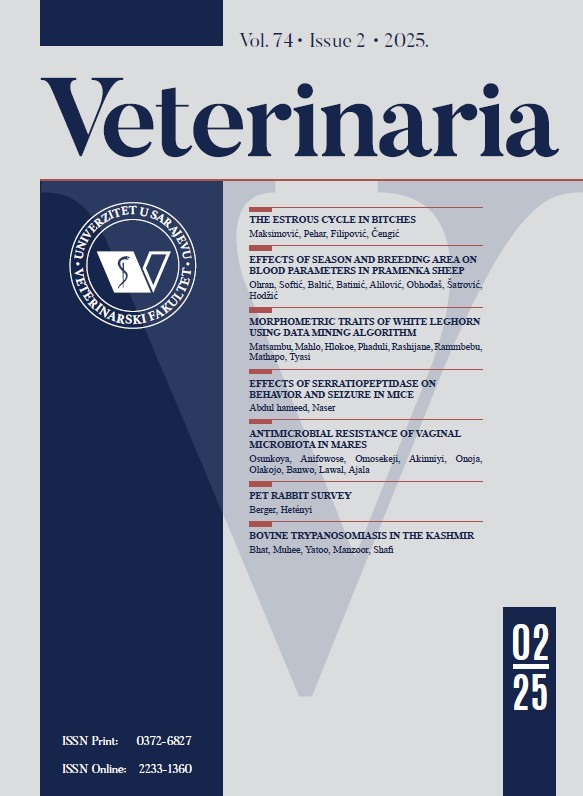The effect of exogenous melatonin on the histological changes of the ovary induced by Zearalenone
Keywords:
zearalenone, melatonin, rat, ovary, histologyAbstract
The mycotoxin zearalenone is often found in cereals and animal feeds. The intake of zearalenone through food can result in the hyperestrogenic syndrome, and is related to ovarian structural and functional alterations in mammals. It competitively binds to estrogen receptors and generates oxidative stress. Melatonin is a hormone produced by the pineal gland with a strong effect on reproduction as it inhibits the hypothalamic-pituitary-gonadal axis. It has also direct and indirect antioxidative effects in the ovarian tissues. Our aim was to explore the effect of melatonin on the histological changes of the ovary induced by zearalenone. Forty female Wistar rats were divided into five equal groups and treated for 28 days according to the following scheme: 1. Zearalenone vehiculum (sunflower oil)- treated group, 2. Melatonin vehiculum- (5% ethanol in Ringer) treated control group, 3. group treated with zearalenone (0.3 mg/kg b.w), 4. group treated with melatonin (10 mg/kg b.w) and 5. group of rats treated with zearalenone (0.3 mg/kg b.w) and melatonin (10 mg/kg b.w). Zearalenone induced degenerative changes in all developmental forms of ovarian follicles, hypertrophy of stroma with blood vessel dilatation and hyperemia. The concomitant application of melatonin and zearalenone resulted in milder morphological changes of the ovary, especially of preovulative follicles. Melatonin administration prevents the zaeralenone-induced structural alterations on an ovary.








